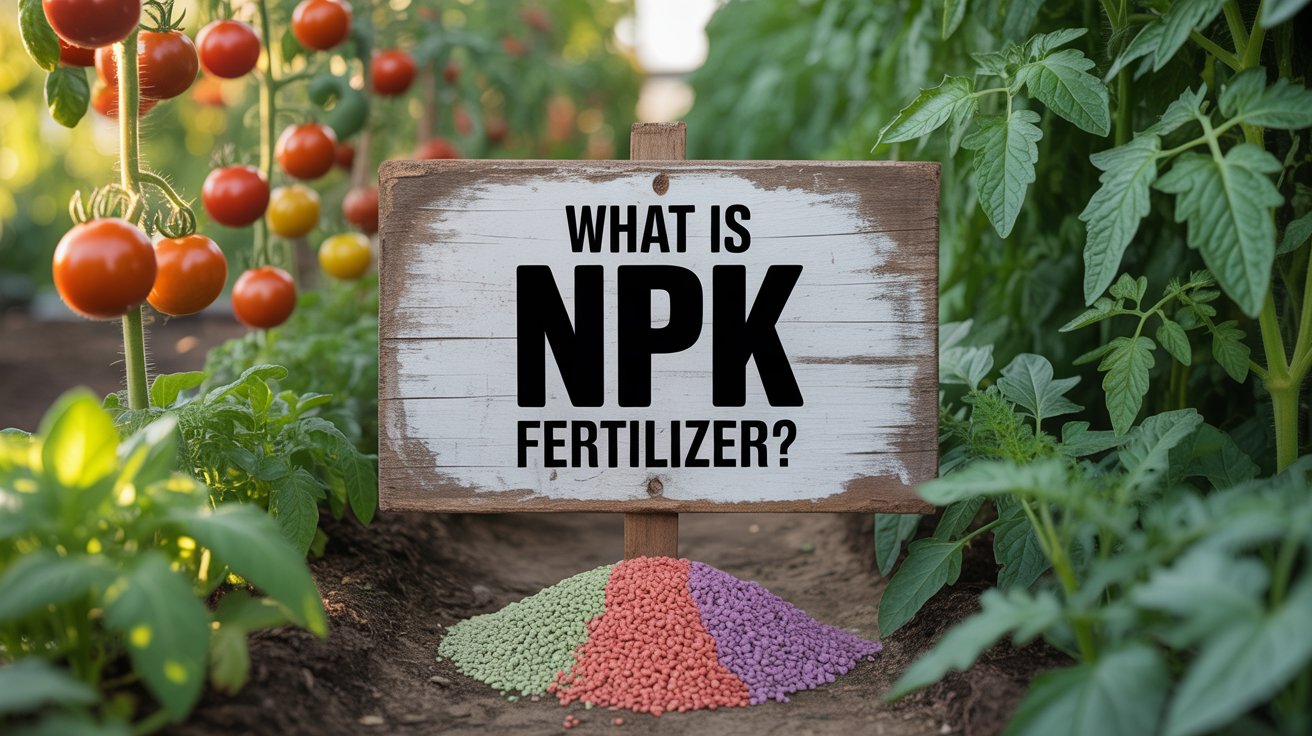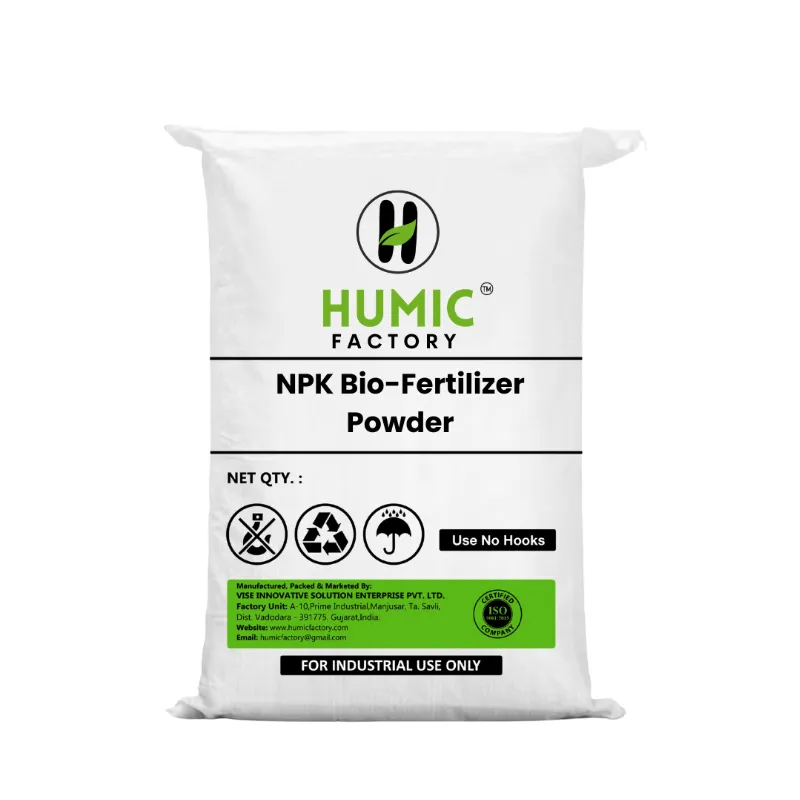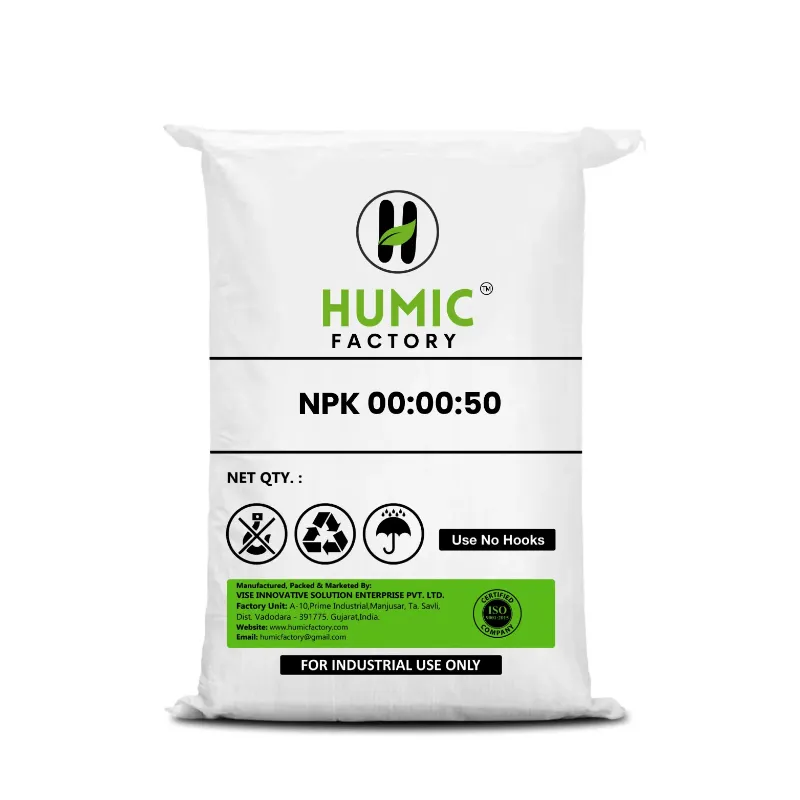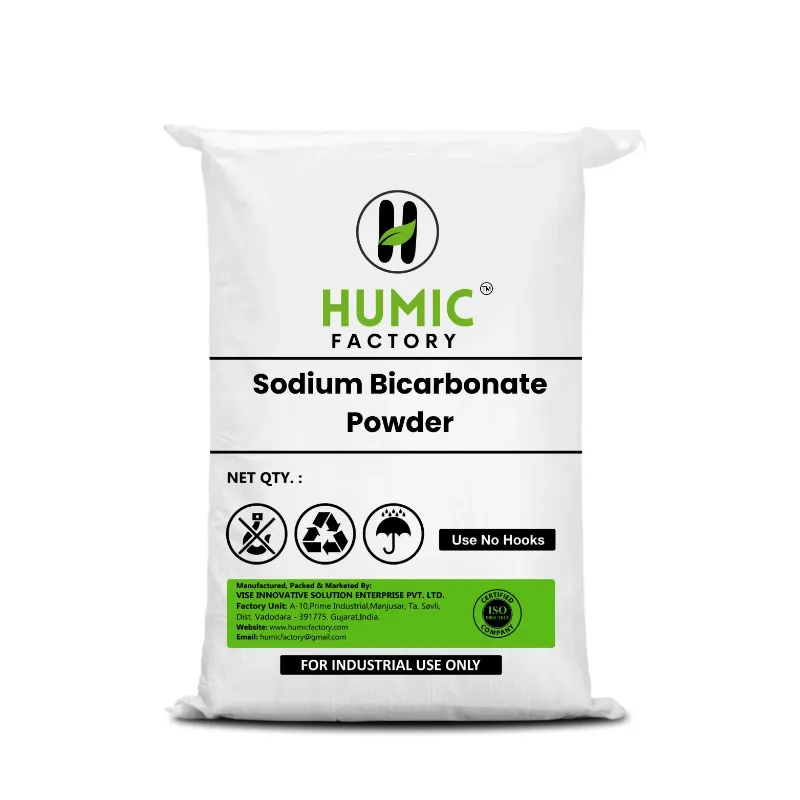NPK fertilizer is a combination of three major plant nutrients - Nitrogen (N), Phosphorus (P), and Potassium (K). Each of these components also enhances plant development with different functions. NPK fertilizers assist plants in all growth stages and facilitate health.
NPK fertilizers benefit the development of leafy greens, flowering blooms, and very robust roots.
Sometimes referred to as nutrient-dense, NPK fertilizers allow your soil to be supplemented with balanced nutrition. Use NPK fertilizers to maximize lush plant growth, flowering beauty, or crop yield, at home with backyard beds, or in larger scale production on a farm.
Like a baby grown up on nutritious food, your plants thrive when grown using the right type of NPK ratio for their developmental needs!
NPK Fertilizer: What Is NPK and Why Does It Matter?
When you want your plants to be strong and green, and to produce the biggest crops possible you need to know one thing—NPK fertilizer. If you are growing vegetables in your backyard, or if you are managing a commercial farm, understanding what NPK fertilizer is and how it works will ultimately help you to be successful.
Plants, like humans, need to eat a balanced diet, and in the world of plants, NPK nutrients are the basis of that diet. Nutrient sources of Nitrogen, Phosphorus, and Potassium serve important functions in every aspect of plant life from seedling emergence to fruit production. If you understand what is NPK, and you’re applying the right fertilizer, then you will be able to supply your plants what they need and when they need it.
What Is NPK Fertilizer and How It Works
What is NPK fertilizer? It is a special mixture of fertilizer that provides three important nutrients in balanced amounts to maximize plant growth. The letters:N, P, and K all represent nutrients. The numbers on the bag (10-10-10) represent the proportion of the three in the material.
Let's talk about how this works. When you apply fertilizer to your soil, it dissolves in the moisture and is released. Plants absorb the nutrients in the fertilizer through their roots, and the nutrients begin to work their magic—greening leaves, helping roots grow stronger, blossoming, flowering, and fruiting. NPK fertilizer is necessary to maintain soil fertility, produce high yields, and also to help avoid common plant deficiencies.
NPK Stands for What? A Quick Explanation
What does NPK mean? It refers to Nitrogen (N), Phosphorus (P) and Potassium (K)—the three key nutrients every plant relies on.
- Nitrogen (N) is essential if you want green, leafy growth. Unless you're growing leafy vegetables and lawns, that will be the main use for your nitrogen.
- Phosphorus (P) helps roots to form strong establishing roots, develop flowers and produce fruit
- Potassium (K) improves the overall health of your plants, enhances immunity, and improves drought resistance.
While each of the components of NPK are distinct and serve a particular function, if you don't get enough of each one, you may cut down on the growth the plants would otherwise have, or even cut down flower or fruit production and weaker root systems; which is why getting the right NPK fertilizer is critical.
What Do NPK Do for Plant Health and Growth?
So now, what do NPK do exactly? They promote plant growth at each stage. Nitrogen promotes leaf and stem growth both faster and greener than if not applied. Phosphorus promotes strength from the ground up. It creates a deep, healthy root system while helping the plant start to flower and produce fruit. Potassium allows the plant to stay strong and healthy, in a way that keeps it in its strongest shape to endure times of stress, changes in the environment, pests, and disease.
All three of these nutrients create an awesome team and can turn your soil into a nutrient loaded bed for strong plants that are thriving. When we use NPK fertilizer properly, we can have our plants grow faster, yield better and stay more durable despite changing seasons and soil conditions.
Understanding NPK – The Science Behind the Trio 
If you want to truly be sophisticated in plant nutrition, you must understand the trio of the driveway that drives the engine of every garden: NPK. You find these three letters on almost every fertilizer label in one form of the other. While most may see just three letters, they actually represent the nutrients that provide insights into how your plants will grow, flower, and create fruit. So, what is NPK fertilizer, exactly?
NPK stands for what? It stands for Nitrogen (N), Phosphorus (P), and Potassium (K). These elements are know as primary macronutrients - essential compounds that plants take up only in three large amounts but in terms of their relationship to the nutrition of plants they are vital. Each of them serve a role in the plant life cycle, and, when added correctly, could add nutrients that will turn your soil into a machine for health for your plants.
Nitrogen (N) and Leafy Vegetative Growth
When you notice your plants growing rapidly, expanding vertically, and developing lush, green leaves, they have likely been well fed with nitrogen. So, what do NPK do for plant growth? In this trio, Nitrogen (N) is the muscle behind photosynthesis and leaves' chlorophyll production, enabling that green color and leafy growth.
It builds the proteins that support growth in leaves and stems—especially important for leafy vegetables such as spinach, lettuce, and culinary herbs. Without nitrogen, plants can look pale, weak, and stunted. So, when they ask, what is NPK fertilizer used for, nitrogen is the fertilizer ingredient to get greener, fuller leaf growth.
Phosphorus (P) and Strong Root Development
If nitrogen fuels the upper part of the plant then phosphorus (P) fuels everything below. Phosphorus assists with root establishment, which is why it is so critical for seedlings and transplanting. Phosphorus also facilitates energy transfer within the plant for flower formation and fruiting.
In the context of the NPK trifecta phosphorus just ensures out plant has a solid base. No phosphorus roots stay shallow, blooms drop early, resulting in no proper fruit maturing. If you questioned what NPK does for plant development phosphorus is very critical in the background for long term strength and production.
Potassium (K) for Plant Strength and Immunity
Lastly, let us discuss Potassium (K), the unsung hero in NPK. Potassium plays an important role in managing water movement in the plant. It helps create strong cell walls and helps with disease resistance. Potassium also activates enzymes and contributes to drought, heat, and pest resistance.
Potassium is like the immune booster for plant health. While not all plants immediately react to potassium in an obvious way like they do to nitrogen and show visible growth over the short-term, K helps ensure that every other aspect currently working, is sustainable. If we have plenty of truck load of potassium in the root zone (K), the plants will be stronger, healthier, and have a dramatic response in terms of productivity, especially so when stressed.
How to Read and Interpret NPK Ratios on Fertilizer Labels
Picking up and understanding fertilizer packaging can be overwhelming when you're starting out in gardening. One of the most significant pieces of information you'll encounter on a label is the NPK ratio—a set of 3 numbers like 10-10-10 or 20-10-5. These numbers indicate exactly what your plants are getting. But first, let's get back to the basics: what is NPK fertilizer?
NPK stands for what? NPK stands for Nitrogen (N), Phosphorus (P), and Potassium (K)—the three macronutrients that are essential for plant health. So, if you pick up a fertilizer with the label 10-10-10, that is a blend with 10% of each one of these nutrients in relation to the weight.
So what do NPK do in this example? Each one aids in different aspects of the plant's development: nitrogen encourages leaves, phosphorus aids roots and flowers, and potassium increases vigor and strength. This is why knowing what each number means can help you determine what products to use in your garden.
Understanding Common NPK Ratios Like 10-10-10
Let us examine the 10-10-10 NPK formula. This balanced fertilizer contains:
- 10% Nitrogen (N) for green lush foliage
- 10% phosphorus (P) for root development and blooms
- 10% potassium (K) for strong stems, disease resistance and stress tolerance
An "all-purpose" fertilizer is given its name because of the balanced fertilizing effect it provides most types of plants. This NPK mix works well orientated for generally maintaining the garden, especially in the early spring (many plants have just begun to grow).
Other common NPK ratios include:
- 20-10-10 - High in nitrogen, best used with leafy vegetables and lawn fertilizer
- 5-10-5 - More phosphorus for flowering plants and root crops
- 0-20-20 - No Nitrogen. Only used when you want to promote roots or blooms without any new leaf growth
Matching NPK Values with Plant Needs
Plants have unique nutritional needs. That’s why there’s no single fertilizer set-up. The goal is to use the NPK values to match the stage of growth, and the type of plant.
For example:
- Leafy plants such as spinach and lettuce are going to want more nitrogen so a ratio of NPK such as 20-10-10 would work well.
- Flowering plants and fruiting plants such as tomatoes and roses will want more phosphorous and potassium ratios like 5-10-10 are better for them.
- Root system plants such as carrots and beets would benefit more from more phosphorous like a 10-20-10 NPK.
- Understanding exactly what NPK fertilizer allows you to choose the right formula relating to your specific purpose: foliage, roots, or fruits.
Decoding Fertilizer Packaging for Better Results
Every bag of fertilizer has NPK numbers on the front, but the back may have some even more important details. You should look for the following:
- A Guarantee Analysis, which indicates the exact percentage of each nutrient.
- Application Instructions, which you want to stick to so that you do not over fertilize and get the most out of the fertilizer you are using.
Type of Plant or Flower, many fertilizers mention what crops or flowers they are for.
If you know how to read the label, you are no longer guessing what is NPK, how much you are putting down, and how it will feed your garden. This will help you to avoid some common mistakes like over-fertilizing or fertilizing a sensitive plant with the wrong ratio of nutrients.
Advantages of Using NPK Fertilizers
Gardeners and farmers know that a successful harvest begins with healthy soil, and healthy soil starts with the right fertilizer. One of the most popular and effective fertilizers is the NPK fertilizer. But, what is an NPK fertilizer and why is this a very preferred type of fertilizer?
NPK stands for what? It stands for Nitrogen (N), Phosphorus (P), and Potassium (K) along with the 3 nutrients that all plants use in large amounts. Each nutrient has a key function in plant development but when applied in the right ratio these nutrients can significantly improve not only plant growth but also overall plant productivity. Let’s discuss how NPK fertilizers improve yield, nutrient balance, and economic advantage than organic options.
Faster Growth and Higher Yield Potential
The most immediate benefit of NPK fertilizers is the growth of the plant. Greener, stronger, and more vigorous plants. But what do NPK do that makes this happen?
- Nitrogen (N) hastens photosynthesis and promotes the rapid development of leaves and stems—especially in vegetables and leafy crops.
- Phosphorus (P) promotes root development and increases flowering and fruit production.
- Potassium (K) improves survivability, water regulation, and disease resistance.
This total package means not only will plants grow faster; but will produce more flowers, fruits, and veggies and improve yield. This is why NPK fertilizer is more than a technical question, it is an ingredient for productivity!
Consistency in Nutrient Supply
Unlike compost and organic manure, where the nutrient ratios are highly variable, NPK is precise. On each bag, the percentage of Nitrogen, Phosphorus, and Potassium are explicitly stated so you can better plan and apply the appropriate formula based on plant requirements.
For instance, in general-purpose fertilizer, 10-10-10 NPK mix, all three nutrients are of equal proportion. When gardening with leafy crops, you may choose a higher nitrogen formula, 20-10-10 and it is verifiable. The reliability of the nutrient supply creates assurance that plants get nutrients to their advantage and at their benefit when the plant needs them to prevent deficiencies or excesses.
If you are asking what is NPK, and what do NPK do? Remember: Every handful of NPK not only provides reliable nutrition, but a sustainable foundation for plants to work from.
Cost-Effectiveness Compared to Organic Alternatives
While organic fertilizers are made from natural ingredients, and are a long-term benefit to managing soil, the downside is they don't cause an instant release of nutrients. Additionally, most organic fertilizers require a lot of fertilizer to reach the level of nutrients that NPK fertilizer provides in just a single application. Regardless, NPK fertilizer is not only the most effective, but the most economical option especially for farmers or gardeners working on larger areas.
NPK fertilizers are extremely available and inexpensive, and being much more concentrated, they will require less product for the same visible results. Therefore, for many growers, they are an option that is practical impact and economical option when ensuring consistent yield and achieving fast results are prioritized.
Choosing the Right NPK Fertilizer for Your Garden’s Needs 
Every plant has its specific nutritional requirements that depend on the type of plant, its stage of growth, and also the soil type it grows in so knowing how to select the correct NPK fertilizer is essential to a healthy garden and successful plants. Before we discuss best practices and recommendations, let's reload the information: What is NPK Fertilizer?
What does NPK stand for? NPK represents the three primary nutrients in fertilizers -- Nitrogen (N), Phosphorus (P) and Potassium (K). Each of these macronutrients has its own function and when you understand what NPK do, then you will be able to give your plants exactly what it needs.
Best NPK for Vegetables and Fruits
Vegetable and fruit plants typically become heavy feeders. They need balanced nutrition to ensure there is lush foliage, a strong root system, and plenty of produce. Generally, vegetables require more nitrogen in their early growing stages to promote leaf growth. Later on, when a plant starts flowering or fruiting, it will require more phosphorus and potassium.
In the case of leafy greens, such as spinach or lettuce a 20-10-10 NPK fertilizer works very well as leafy greens require strong vegetative growth. For example, tomatoes, brinjals or chilies - which bear fruit, a 10-20-20 or 5-10-10 formula is more suitable because it should promote flowering, root strength and quality of the fruit.
Understanding what is NPK fertilizer and then applying the appropriate balance will help you get a better yield, reduce deficiencies and better the flavour and size of your harvest.
NPK for Flowering and Ornamental Plants
If your goal is to grow colorful flowers and ornamental plants, then you will want a fertilizer that promotes bud initiation, flowering, and flower retention. These plants do not need a great deal of nitrogen - in fact, greater quantities can promote leaf growth over flower production! Instead, they require higher amounts of phosphorus and potassium.
For flowering plants, the usual recommendation is about a 10-20-10 or 15-30-15 NPK ratio (rose, marigolds, hibiscus). The 'bloom' fertilizer ratios improve root structure, promote flowering, and strengthen stem structure to hold blooms longer.
If you understand what NPK does, you can then target producing more flowers, prolonging flowering, and enhancing colors in your ornamental garden.
NPK for Lawns and Green Spaces
Lawns, grassy environments, and turf areas have very different needs compared to the nutrient requirements of fruit or flower gardens. Lawns need top growth that is lush, green, and can tolerate foot traffic, mowing, and the elements.
Lawns are usually fertilized with high nitrogen fertilizers. Balanced (or nitrogen-heavy) fertilizers, such as 16-4-8, 20-10-10, or 30-0-10, will help produce a thick dark green top growth with roots, and vigor.
Once you understand the NPK of fertilizers it is apparent that lawns need more nitrogen (for the foliage), and enough phosphorus and potassium for roots and strength.
NPK Application Tips: Use It Effectively and Safely
Now that you know what NPK fertilizer is and how it is good for plants in the proper contexts, it is a matter of applying it effectively and safely. The efficacy of fertilizer—especially one this powerful—is dependent upon when you apply it, how you apply it, and how much you apply. No matter how great a seasoned nutrient you may add, they can still be damaging!
As NPK stands for Nitrogen (N), Phosphorus (P), and Potassium (K) and each nutrient has its unique importance, the timing and application will matter. Let’s look at application tips to get your desired benefit while avoiding the most common pitfalls.
Ideal Time of Day and Season to Apply NPK
Timing plays a critical role in gardening and the application of fertilizer. In order to optimize effectiveness you should apply NPK fertilizer at a time when it is cooler out, either early in the morning or later in the afternoon. This will prevent nutrient burn due to sunlight being too strong and also allows the nutrients in the soil to be absorbed more slowly by the plant.
And as to the best timing (season) to apply NPK fertilizers:
- Early spring. This is when the plants are waking from their dormancy and need a nutrient boost to get going again.
- Mid-season (summer). This is for any plant that is flowering or fruiting and will need more support during this time.
- - Post-harvest (or late-season) application. This should be done in a smaller quantity to keep the roots healthy in a post-harvest condition and to keep the soil nutrients somewhat available for the next cycling season.
Always check the specific crop or plant stage before applying because what NPK does depends on the plant's current need (leafy, flowering, or strengthening).
Methods of Application – Granular vs Liquid
To understand more about what is NPK fertilizer, it's also important to recognize the various types of fertilizer and their usage. Granular NPK fertilizer comes in solid pellet or powder form and typically can be poured directly into the soil. Granular fertilizers are beneficial for slow release feeding; hence they would work best for crops which are likely to take a longer time to grow like fruit trees, flowering plants or lawns.
Liquid NPK fertilizers are considered fast acting as they are rapidly absorbed through the roots or leaves (if used in a foliar spray). Liquid fertilizers are best suited for when you want to give your plants an immediate boost to nutrient availability; typically this is most important when you are in the flowering or fruiting stage.
There is no right or wrong answer on which to use, however, it is something to consider as you think about your plant, soil condition, and the speed of impact you would like from the fertilizers. Granular fertilizers provide a very controlled feeding option while liquid fertilizers provide an immediate plant impact.
Safety Guidelines to Prevent Overuse
It's tempting to think that more fertilizer equals better growth, but it's important to remember that over-fertilization can harm plants, potentially even killing them, and harm the soil. Now you know what is NPK and what do NPK, but using it the right way is also going to be important.
Here are some important safety tips to remember:
- Read the label: Follow those dosage recommendations exactly, and remember that different crops have different needs.
- Water-in after application: If using dry fertilizer, watering will help dissolve the fertilizer and allow it to spread evenly across your soil.
- Avoid contact with roots: Don't apply the fertilizer too close to the plant stem or root system. If possible, spread it around the base of your plant.
- Store safely: Keep your NPK product away from children and pets, and store your fertilizer in a cool dry place.
By following these simple safety precautions, you will be able to protect your plants and the environment, while maximizing the use of your NPK fertilizer solution.
Sustainable Gardening with NPK Fertilizers
As more gardeners and farmers become eco-conscious in their practices, the emphasis changes from simply growing healthy plants to protecting soil, water, and the environment in general. While many think sustainable agriculture only applies to organic practices, NPK fertilizers can also be part of a sustainable gardening plan, if they are applied in a careful way. But first things first: What is an NPK fertilizer? An NPK fertilizer is a blend of three macronutrients that plants need to grow- Nitrogen (N), Phosphorous (P), and Potassium (K). If you have ever asked what is NPK? or what does NPK stand for? this triad helps start leafy growth, develop roots, and builds overall plant strength. Lastly, what do NPK do for sustainability? When applied in an appropriate way, they help create maximum plant health with minimal waste.
Preventing Runoff and Water Pollution
Increased nutrient runoff is one of the greatest environmental impacts of synthetic fertilizers. If fertilizer applications exceed the recommended levels or happen immediately before rain, excess nutrients, including nitrogen and phosphorus, runoff into adjacent water bodies and streams, causing major problems for rivers and oceans (algae blooms, fish kills, and pollution).
To mitigate this:
- Apply NPK fertilizer during dry periods, followed by minimal watering; other options
- Select slow-release NPK formulations that remain in the soil longer and release nutrients more slowly;
- Never apply fertilizers near water bodies, storm drains, or hard surfaces where nutrient runoff is more likely;
Understanding what do NPK do means understanding the likely effects beyond your garden, and taking action to avoid it.
Combining NPK with Organic Matter
Sustainable gardening doesn't mean you have to choose between synthetic and organic - and most times it isn't an either/or situation, it's often best to use both! Adding compost, vermicompost or aged manure along with NPK fertilizers benefit your garden.
- Improve soil structure and microbial life
- Enhance nutrient uptake
- Decrease dependence on chemical inputs over time
For example, mix a balanced NPK fertilizer like 10-10-10 with organic compost so that you feed your plants some quick nutrients in the process of building long-term soil health. You can then be smarter about what and how you can combine your NPK fertilizer with the organic matter, once you know what NPK fertilizer actually stands for - a balanced living soil then becomes feasible.
Long-Term Soil Health Management
Sustainable gardening isn't only about this season's harvest—it includes considerations of your soil quality in the long-term. Over-fertilizing with synthetic fertilizers without regard for your soil health can lead to imbalances, compaction, and reduced fertility.
To help mitigate this:
- Apply a fertilizer in rotations and NPK formula should vary over time due to changing needs
- Do frequent soil tests to look for pH balances and nutrient levels
- Add organic matter in various forms in a consistent manner to stimulate microbial action and cycling
The important thing is moderation and thoughtfulness. When you know what an NPK fertilizer is and how it interacts with your soil biology builds and the systems in which they function, you can use it as a tool for long-term use and benefit, not just short-term benefit.
FAQs
Q1. What does NPK mean in fertilizer?
NPK represents Nitrogen, Phosphorus, and Potassium, the three nutrients that fuel plant growth in NPK fertilizers.
Q2. How do I know which NPK ratio to choose?
NPK ratio selection is based on your plant's growth stage and soil requirement—knowing what do NPK allows you to select the right balance.
Q3. Can I mix NPK fertilizer with compost?
Yes, mixing NPK fertilizer with compost improves soil health and allows nutrients to be more available for sustainable gardening.
Q4. How often should I apply NPK fertilizer?
Frequency will vary based on plant type and formula, but knowing what is NPK fertilizer and following directions on the label will allow for safe use.
Q5. Is NPK fertilizer safe for any type of plants?
Yes, when used correctly NPK fertilizer is safe for most plants—it is only necessary to adjust the ratio depending on what NPK do to each particular plant's requirements.
Conclusion: Transform Your Garden with the Power of NPK Fertilizer
The key to having a good garden starts with understanding your soil, understanding your plants, and understanding their nutritional requirements. One of the easiest and most effective ways to accomplish this is by utilizing NPK fertilizer. Whether you are growing leafy greens, showy flowers, or sweet fruits, having the right proportions of nutrients is fundamental to gardening success.
But what is NPK fertilizer, and why is it important? It is a blend of nitrogen (N), phosphorus (P), and potassium (K) which are the three most important nutrients for your plants. When you understand what is NPK, and what NPK stands for, you will begin to understand how much influence you can have on the health, beauty, and output of your garden.
A Simple Step Toward Greener Results
With a bit of knowledge, and the correct product, you're making huge strides toward greener, healthier plants. By utilizing NPK fertilizer according to your plant's unique needs, you will see the results with your own eyes—faster growth, rich leaves, stronger root systems, and an explosion of new flowers or fruits.
It's all pretty simple—merely understanding what do NPK do gives you an ability to make informed, effective decisions moving forward in your gardening activities.
NPK: A Smart Investment for Home Gardeners
Whether you're a novice growing herbs in pots or a serious gardener working on a plot out back, NPK fertilizer is one of the most affordable, high-impact tools you'll ever buy. It will do its job quicker than most organic alternatives and has a staff of consistency that is manageable.
Learning what is NPK fertilizer means that there will be no wasting of your time or money, your plants can receive exactly what they need, and you can engage with the results like luscious greens, flower color, and tasty harvests.
Embrace Nutrient-Rich Gardening for Better Harvests
Implementing NPK in your practices does not mean abandoning organic gardening or harming the soil. When used in a responsible way, NPK fertilizers can support long-term soil health, help avoid nutrient deficiencies, and keep your garden productive for multiple seasons.
Now that you know what NPK means, or what is NPK, and what do NPK do, it's time to use that knowledge. Feed well, nurture the soil, and witness your garden transform into a thriving, beautiful life.






